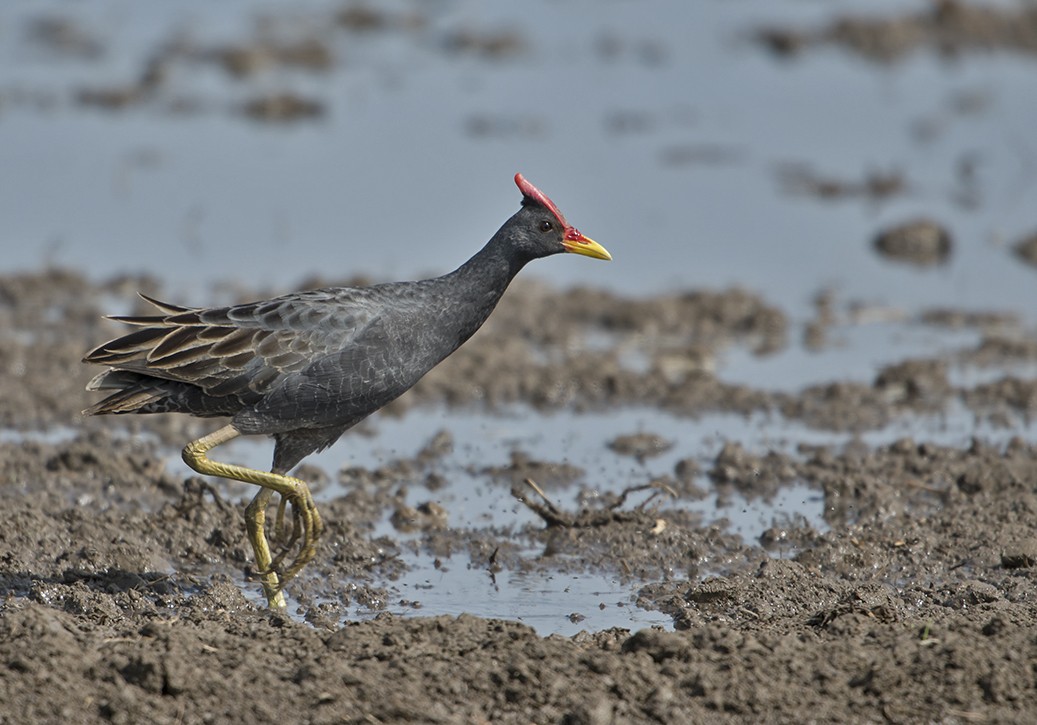Watercock
A species of Watercock Scientific name : Gallicrex cinerea Genus : Watercock
Watercock, A species of Watercock
Botanical name: Gallicrex cinerea
Genus: Watercock
Content
Description General Info
Description
The watercock (Gallicrex cinerea) is a waterbird in the rail and crake family, Rallidae. It is the only member of the genus Gallicrex. Traditionally held to be closely related to moorhens (which the adult male visually closely resembles), it is actually member of a mostly tropical Asian clade containing also Aenigmatolimnas, Amaurornis, Himantornis and Megacrex. Their breeding habitat is swamps across south Asia from India, Pakistan, and Sri Lanka to south China, Korea, Japan, Philippines and Indonesia. They nest in a dry location on the ground in marsh vegetation, laying 3-6 eggs. These large rails are mainly permanent residents throughout their range. The body of this rail is flattened laterally to allow easier passage through the reeds or undergrowth. It has long toes and a short tail. Adult male watercocks are 43 cm (17 in) long and weigh 476–650 g (1.049–1.433 lb). They have mainly black-grey plumage with red legs, bill, extended frontal shield and horn. Young males are buff in colour, darkening as they mature. Their bill is yellow and their legs are green. Female birds are smaller at 36 cm (14 in) and 298–434 g (10.5–15.3 oz). They are dark brown above and paler below. the plumage is streaked and barred with darker markings. The bill is yellow and the legs are green. The downy chicks are black, as with all rails. These birds probe with their bill in mud or shallow water, also picking up food by sight. They mainly eat insects and small fish and seeds. They forage on the ground. Watercock are quite secretive, but are sometimes seen out in the open. They are noisy birds, especially at dawn and dusk, with a loud, gulping call. 
Size
36 - 43 cm
Nest Placement
Ground
Feeding Habits
Watercock primarily consumes seeds, shoots, and rice, while also eating worms, molluscs, and various insects. Skilled swimmers, they forage during dusk, overcast, or rainy conditions, and are known for their secretive, crepuscular feeding behavior.
Habitat
The habitat of watercock typically includes freshwater environments such as reedy or grassy swamps, as well as human-modified wetlands like flooded pastures, rice fields, and sugar cane irrigation areas. This bird also inhabits areas with rush-fringed water bodies, including channels, rivers, ponds, and ditches, and can sometimes be found in brackish swamps across broad geographical regions.
Dite type
Omnivorous
General Info
Feeding Habits
Bird food type
Species Status
Not globally threatened.
